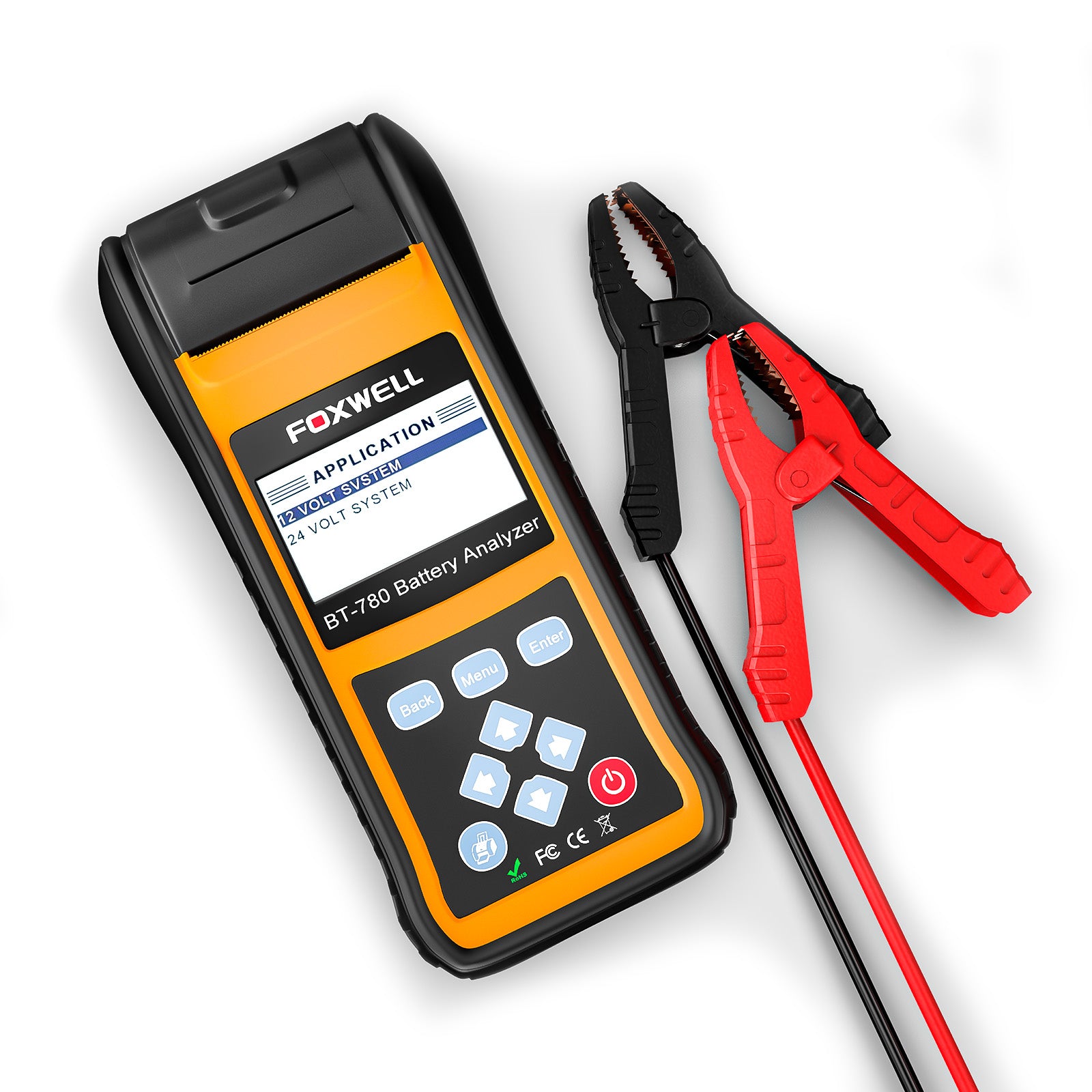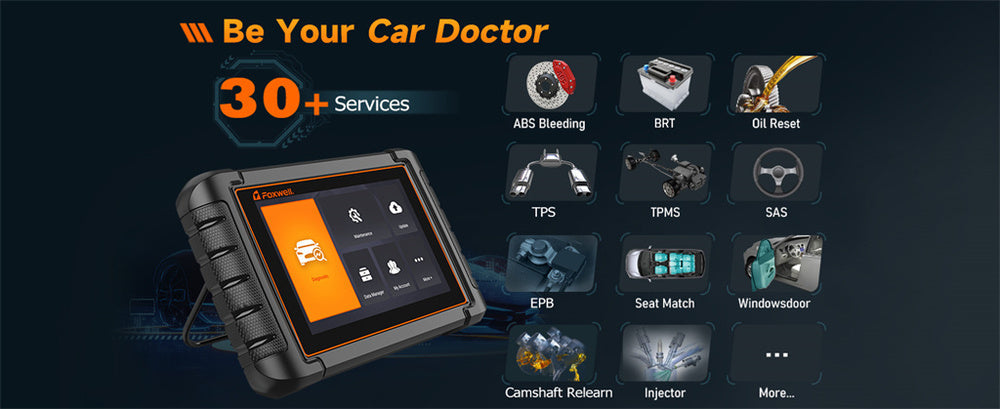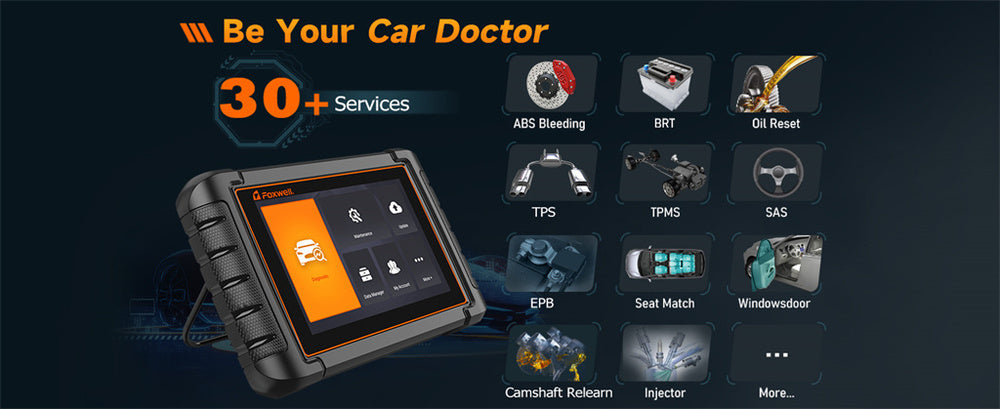Imagine you're cruising down a scenic highway with your family on a long road trip. Suddenly, a warning light flashes on your dashboard.
Your tire pressure monitoring system (TPMS) alerts you to a potential issue with one of your tires. Without a proper TPMS sensor tool, this warning can turn your relaxing drive into a stressful situation.
Thankfully, with the automotive obd2 scanner and knowledge, you can quickly address the problem and get back to enjoying your journey.
According to a recent survey by the National Highway Traffic Safety Administration (NHTSA), 25% of vehicles on the road have at least one under-inflated tire, significantly increasing the risk of accidents.
Properly inflated tires are not just a matter of safety; they also contribute to fuel efficiency and tire longevity. The NHTSA reports that maintaining correct tire pressure can improve gas mileage by up to 3.3% and extend tire life by thousands of miles.
Given these statistics, understanding how to use a TPMS sensor tool is crucial for every driver. This guide will walk you through the steps, providing you with the knowledge to maintain your vehicle's tire health confidently.
What is a Tire Pressure Monitoring System (TPMS)?
The Tire Pressure Monitoring System (TPMS) is an electronic safety feature installed in most modern vehicles. Its main function is to monitor the air pressure inside each tire in real time and alert the driver when the pressure is too low or abnormal.
Due to safety regulations such as the U.S. TREAD Act and EU ECE-R64, nearly all new vehicles are now required to be equipped with a TPMS.
There are two main types of vehicle TPMS:
- Direct TPMS: Pressure sensors are mounted inside each tire and transmit real-time data to the vehicle’s ECU.
- Indirect TPMS: Uses the ABS system to estimate tire pressure based on wheel rotation speed.
To manage these systems, drivers and technicians use a tire pressure monitoring system tool(TPMS tool). This device communicates directly with the sensors, allowing you to read sensor data, activate or test sensors, and perform relearn or programming functions when new sensors are installed. In other words, a TPMS tool helps verify that the TPMS sensor function is working correctly and that all tires are accurately monitored.
What is a TPMS Sensor Tool?
A TPMS sensor tool is a specialized device used to monitor and manage the tire pressure sensors in your vehicle. These sensors alert you when the tire pressure is too low, which can be crucial for safe driving.
The tool allows you to activate, read, and program these sensors, ensuring they function correctly and providing accurate readings. Many TPMS scanners also include advanced diagnostics to help pinpoint issues more quickly.
One reliable model to consider is the Foxwell GT60 Plus TPMS Sensor Tool. This tool is known for its user-friendly interface and comprehensive functionality, making it an excellent choice for beginners and experienced users.

Why is Using a TPMS Sensor Tool Important?
Using a TPMS sensor tool offers numerous benefits beyond essential tire maintenance.
Here are the key reasons why it is necessary:
Safety: Tire pressure is crucial for vehicle stability, handling, and braking efficiency. Under-inflated tires can lead to increased stopping distances, reduced grip on the road, and a higher likelihood of tire blowouts, all of which can cause accidents.
Fuel Efficiency: Tires with correct pressure reduce rolling resistance, leading to better fuel economy.
According to the U.S. Department of Energy, maintaining the proper tire pressure can improve your vehicle's gas mileage by up to 3.3%.
Tire Longevity: Consistently maintaining the correct tire pressure helps prevent uneven tire wear, extending your tires' life. This saves money on replacements and ensures a smoother and safer ride.
Environmental Impact: Proper tire maintenance contributes to lower carbon emissions. Under-inflated tires can increase fuel consumption, leading to higher CO2 emissions. By keeping your tires properly inflated, you are reducing your vehicle's environmental footprint.
Cost Savings: Maintaining proper tire pressure reduces the risk of damage to your vehicle's suspension and alignment systems. Over time, this can save you a significant amount in repair costs.
Situations Where a TPMS Sensor Tool is Essential
A TPMS sensor tool is not just for emergency use. Here are several situations where this tool proves invaluable:
Regular Maintenance: Routine tire pressure checks can prevent issues before they arise. Using a TPMS sensor tool during regular maintenance helps you stay ahead of potential problems.
Seasonal Tire Changes: When switching between summer and winter tires, a TPMS sensor tool can ensure that all new tires are correctly programmed and functioning.
Long Road Trips: Before embarking on a long journey, using a TPMS sensor tool to check tire pressure can give you peace of mind and enhance safety.
After Tire Repairs or Replacements: If your tire is repaired or replaced, a TPMS sensor tool can help you ensure the new or repaired tire is calibrated correctly and safely.
Rental or Second-Hand Vehicles: If you are using a rental car or have recently purchased a second-hand vehicle, a TPMS sensor tool can verify that the tires are in good condition and inflated.
How to Use the Foxwell GT60 Plus TPMS Sensor Tool
Using a TPMS sensor tool may seem daunting at first, but with the proper steps, it becomes straightforward. Here's a step-by-step guide to help you through the process:
Preparation
Gather Necessary Tools: Ensure you have the Foxwell GT60 Plus TPMS sensor tool, your vehicle's user manual, and any specific instructions from the TPMS tool manufacturer.
Check Battery: Make sure the TPMS tool's battery is fully charged to avoid interruptions during the process.
Identify the Sensor Type
Vehicles come with different types of TPMS sensors. Identify if your car uses direct or indirect TPMS. Direct TPMS sensors are installed in each tire, while indirect TPMS uses the ABS to measure tire pressure.
Activate the Tool
Power on the Foxwell GT60 Plus TPMS sensor tool. The tool features a straightforward interface with options to select your vehicle's make, model, and year.
Select the Correct Mode:You can choose the function you need: the sensors' activation, reading, or programming. You'll use the read or check mode for most routine checks.
Scan the Sensors: Starting with the front left tire, hold the TPMS tool near the valve stem and initiate the scan. The tool will communicate with the sensor and provide a readout of the tire pressure.
Interpret the Data: Compare the readings with the recommended tire pressures found in your vehicle's manual. Note any discrepancies.
Program New Sensors: If a sensor needs replacing, use the Foxwell GT60 Plus to program the new sensor. Then, follow the on-screen instructions to sync the new sensor with your vehicle's TPMS.
Relearn Procedure: Some vehicles require a TPMS relearn procedure after checking or changing sensors. This process involves following specific steps to ensure the car recognizes the sensor data correctly.
Ready to experience the Foxwell GT60's performance for yourself?
Buy Foxwell GT60 Now – $279.00.All system Diagnostics + Bluetooth
TPMS Scanning and Diagnostics
A modern TPMS tool does more than just read tire pressure. It can communicate with your vehicle’s ECU to detect sensor issues, low battery warnings, and even system faults, giving you a more complete picture of your tire health.
The Foxwell GT60 Plus also functions as a TPMS scan tool, making it easy to perform professional-level diagnostics. With this tool, you can:
- Retrieve TPMS-related diagnostic trouble codes (DTCs): Identify sensors that may be malfunctioning or sending incorrect readings.
- Test sensor signal strength and frequency: Ensure each sensor is transmitting data correctly using a TPMS test tool.
- View real-time tire pressure across all wheels: Monitor all tires simultaneously for immediate alerts.
- Perform system diagnostics: Locate faulty or unresponsive sensors quickly, saving time and effort during troubleshooting.
By using a TPMS scan tool like the GT60 Plus, you not only check tire pressure but also verify that each TPMS sensor function is operating properly, helping you maintain vehicle safety and performance with confidence.
Common Issues and Troubleshooting
Sensor Not Detected: Ensure the tool is positioned correctly and the sensor is within range.
Incorrect Readings: Check for sensor damage or interference. Re-calibrate the tool if necessary.
Programming Errors: Verify the new sensor is compatible with your vehicle and follow the programming instructions accurately.
Related Reading: NT809TS TPMS Diagnostic Tool: Real User Reviews
Choosing the Best TPMS Tool for Your Vehicle
| Consideration Dimension | Key Points | Special Reminder |
|---|---|---|
| Compatibility |
- Frequency: Must support the frequencies used in your region (e.g., 315MHz in North America, 433MHz in Europe). - Vehicle/Protocol: The tool should support the car brands and model years you service. Broader coverage of sensor models is better. |
This is the primary prerequisite for purchase. Always confirm the tool supports your target vehicles. |
| Functionality |
- Professional Grade: Must include Programming/Matching and OBDII Relearn capabilities; core for servicing modern vehicles. - Basic Grade: Activation/Wake-up and Diagnostics/Reading (tire pressure, temperature, battery status) are fundamental for all tools. |
Choose the functional level based on your needs (professional repair/personal use) to avoid over-specification or insufficiency. |
| Cost of Ownership |
- Software Updates: Choose brands that offer convenient and long-term free updates to support new vehicle models. - Sensor Inventory: Using programmable universal sensors can significantly reduce inventory stock and costs. |
The initial purchase price isn't the only cost; ongoing updates and support are more critical. |
| User Experience |
- Operational Logic: Clear menu design and intuitive process guidance. - Hardware Performance: Readable screen, stable trigger signal, and long battery life. |
Directly impacts work efficiency. Consulting user reviews is recommended. |
Look more information about our list of best tpms diagnostic tool.
Brand-Specific TPMS Tool Guide
| Vehicle Brand | Typical TPMS Tool Type | Key Features & Compatibility | Workflow Example | Purpose |
|---|
| Toyota | Multi-system diagnostic scanners | - Full-system diagnostics: supports ABS, SRS, EPB, TPMS, etc. - Brand coverage: Toyota, Lexus, Scion models. - Free software updates |
Example Tool: Foxwell GT60 Plus 1. Connect to OBD2 port 2. Select "TPMS Reset" 3. Follow menu prompts to match sensors (some models may need sensor activation separately) |
Users want a versatile, continuously updated tool to handle Toyota’s complex onboard network. |
| Ford | Dedicated TPMS reset tools (OEM or compatible) | - Vehicle-specific: supports Ford TPMS-19 sensor protocol - Cost-effective alternative to dealer service |
Example Workflow (Focus): 1. Enter “training mode” via key sequence 2. Place tool near each valve stem, trigger sensor 3. Complete all sensors sequentially (LF→RF→RR→LR) within 2 minutes |
Users look for a fast, low-cost method to reset sensors after tire or sensor replacement and to clear dashboard warnings. |
| Chevy / GM | Universal activation/reset tools | - Broad compatibility: Chevrolet, Buick, GMC - Simple operation: one-button or auto-sensing |
Example Tool: VXSCAN TPMS Reset Tool EL50448 1. Put TPMS in learn mode via infotainment system 2. Press tool button on each valve for ~4 seconds until horn confirms |
Users prefer easy-to-use, cost-effective tools for routine sensor relearn and clearing fault lights without visiting a shop. |
Tuning Tools Truck TPMS For Trucks and Fleet Vehicles
For heavy‑duty trucks and fleet vehicles, you’ll want a tool designed specifically for commercial use. Brands like ATEQ, Autel and Bartec offer truck/HD‑vehicle TPMS tools (e.g., the ATEQ VTTruck2.0, Autel ITS600, Cando HD TPMS) that support sensor programming, large‑axle configurations and fleet‑level diagnostics. These tools ensure stable performance and safety on long hauls and busy fleet operations.
Conclusion
Using a TPMS sensor tool is an essential skill for any vehicle owner. It enhances safety, promotes efficiency, and saves costs in the long term.
Following the steps outlined in this guide and utilizing reliable tools like the Foxwell GT60 Plus, you can confidently monitor and maintain your tire pressure, ensuring a smoother and safer driving experience.
FAQ
What is a TPMS sensor tool?
It monitors and manages your vehicle's tire pressure sensors.
Why is it important?
It ensures safety, improves fuel efficiency, and extends tire life.
How do I use the Foxwell GT60 Plus?
Activate the tool, scan the sensors, interpret the data, and program new sensors if needed.
Can I use this tool on all vehicles?
No TPMS tool can claim 100% compatibility with every vehicle on the market. However, professional universal TPMS tools can cover the majority of common makes and models, including Toyota, Ford, Chevy, GM, Honda, Nissan, and more. Tools like the Foxwell GT60 Plus, Autel MaxiTPMS TS608, and Bartec Tech400Pro support a wide range of direct and indirect sensors, allowing activation, reading, programming, and relearn functions for most passenger cars, SUVs, and light trucks.
For best results, always check the tool’s official compatibility list or database before purchasing, especially if you work on less common or newer vehicle models.
What are the best TPMS tools for personal vs. professional use?
For Personal Users:
If your main needs are reading tire pressure and temperature, or adding a display for a TPMS system that is not clearly shown in the vehicle, a practical and cost-effective TPMS tool is suitable. For basic diagnostic functions, such as reading sensor IDs and battery status, a simple activation or sensor wake-up tool is often sufficient.
For Professional Users:
You will need a comprehensive professional TPMS diagnostic and programming tool. These tools typically include all advanced functions, such as sensor programming, OBDII relearn, and full system diagnostics. Leading brands in the market include Autel and Launch, offering professional-grade solutions for workshops and fleet services.







Leave a comment
This site is protected by hCaptcha and the hCaptcha Privacy Policy and Terms of Service apply.